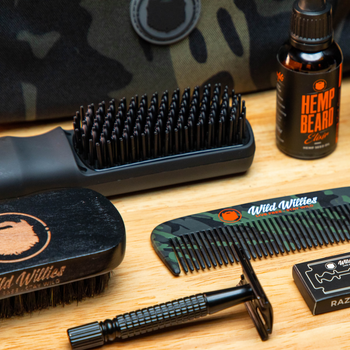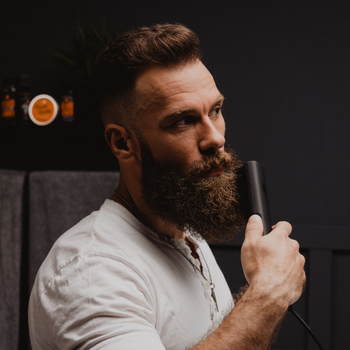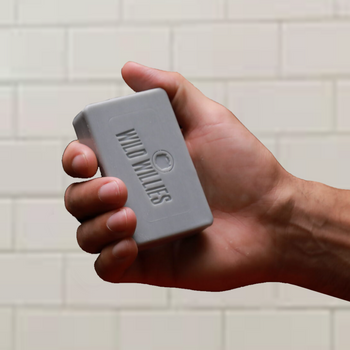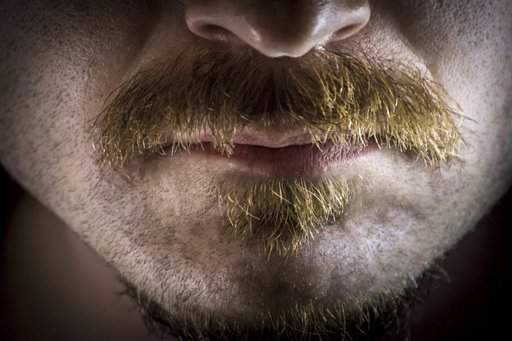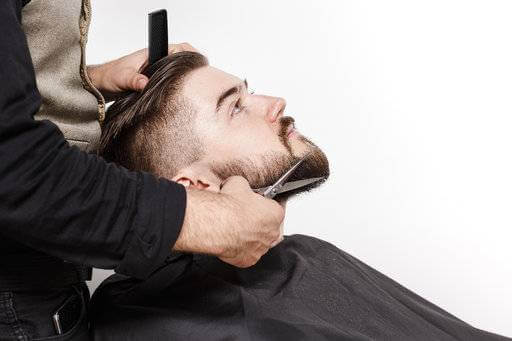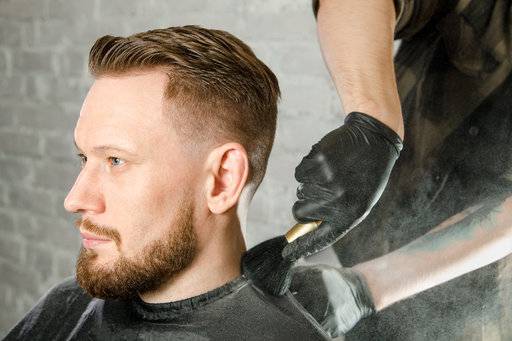If you've had a beard for a long time, you may find yourself frustrated by the fact that your home shaving never quite looks the same as a professional job. Alternatively, if you're growing out a beard for the first time, you may find yourself wondering how to get the clean look you've seen on others. The answers are often in faded beard styles.
Fades are a versatile option that allows for either subtlety or boldness depending on how you shave. While bushy, natural-growth beards are one look to go for, they are far from the only option. Fades are a way to level up any length of beard and turn it into something that looks professional and stylish.
Table of Contents
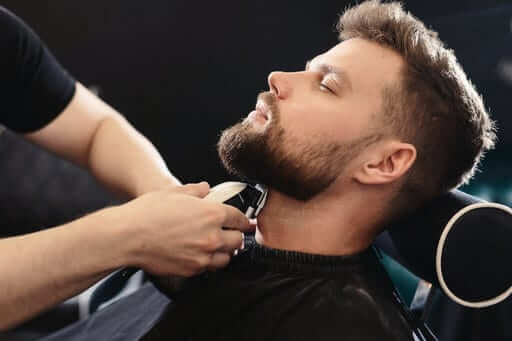
What Are Faded Beard Styles?
When done correctly, a fade should seamlessly carry through shorter and longer sections of hair to create a smooth gradient. The most common areas to fade are around the sides of the face, under the chin, and inwards towards the cheeks. This is because these areas are where the harshest lines are formed by most beards. The goal of a fade is to soften these areas, creating a smoother transition across the face. While often coveted as a look that can only be done by professionals, if you have a steady hand and are willing to put in some time to learn, it is something that you can achieve at home.
The Popularity of Faded Beard Styles
While more extreme faded beard styles may be gaining popularity, basic fades in beards and hair are nothing new. If you've ever gone to a professional barber, chances are you've had at least a subtle fade added through your sideburn area, around your neckline, and maybe even around your cheeks. So why is a fade such a standard in professional beard grooming? Basically, it makes your beard look cleaner and more well-kempt, no matter the length.
6 Types of Faded Beard Styles To Consider
Many faded beard styles go well with an accompanying hairstyle. You'll notice most of these looks are actually beard and hair combinations. This is not an exhaustive list, but rather some of the most versatile options that your local barber would probably recognize were you to bring them up. Remember that none of these faded beard styles are set in stone, and you can tweak most of them as needed to fit with your desired appearance.
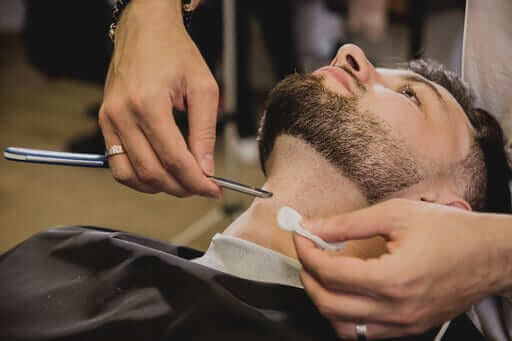
1. Stubble Fade
Stubble is often given a bad reputation. It is not quite a full beard, and if not properly cared for, it may look like you have simply forgotten to shave; however, there are ways to make it look well-kempt and even stylish. Whether you're in the process of growing out your beard or don't want to worry about trimming and caring for a longer length, a stubble fade can be a good way to clean up your look. Stubble fades can be handled similarly to a basic beard and hair fade, but expect the results to be more subtle. Fades can work well with long or short beard stubble growth.

2. Skin Fade
A skin fade is a look that involves shaving the faded area so close that no hair is left at the closest-shaved point. The closely shaved section can be used as an accenting line through the hair as well as around the ear to create sharp, clean edges that draw the eye. This is a great look to use with a well-maintained longer beard.
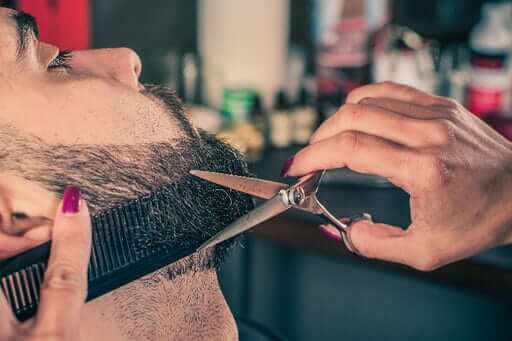
3. Side Fade
This fade is all about highlighting the mustache and goatee area. A look that is striking when pulled off but generally requires some professional care and maintenance, a side fade involves shaving the beard down relatively close to the skin all the way up to the edges of the chin, nose, and mouth area. The mustache and goatee area are left at a longer length. This can be a good option for those looking to accentuate their chin and jaw.
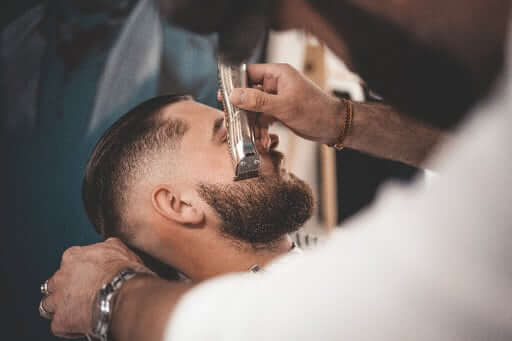
4. Faded Beard With High-Fade Haircut
A look that can help create an elongating effect around your face, the high-fade beard and hairstyle is a good choice for round or square face shapes. This bold look involves a fade that goes around the ears and fairly far up into the scalp, leaving the length on the top area of your hair only. While it sounds a little intense and can require some maintenance, it is a hairstyle that can look quite striking, especially if you have a naturally light hair color.
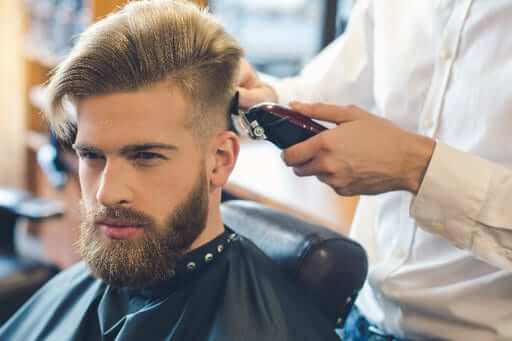
5. Faded Beard With Low-Fade Haircut
Similar to the look above, this style involves fading the beard into the hairstyle in one smooth transition. The main difference between a high-fade and a low-fade look is that the low fade transitions more quickly from the sideburns to a longer hair length, meaning that the hair doesn't need to be shaved as far up towards the scalp. The fade should go around the beard area near the ear and continue up about an inch and a half or so towards the hair. This is a great option if the high-fade haircut interests you, but you want something a bit more toned down and lower maintenance.
6. Faded Beard With Fully Shaved Head
A classic duo, the well-maintained beard with a shaved head is a look that takes the utilitarian nature of shaved-off hair and turns it into something stylish. As far as faded beard styles go, this one is fairly open-ended, with the beard being the obvious star of the show. Most people opt for a smooth gradient that goes from the mid to high sideburn area and tapers off towards the top of the scalp. You can also consider adding some fading around the cheeks to add more dimension to the beard.
Choosing the Right Faded Beard Style for Your Face
Generally speaking, there are a few ways to decide which style of beard and hair will look best with your face. The first step in determining which hairstyles may work best is to figure out your face shape. Then you can start to consider the texture and color of your hair and how it looks shaved down to different lengths as part of the fade.
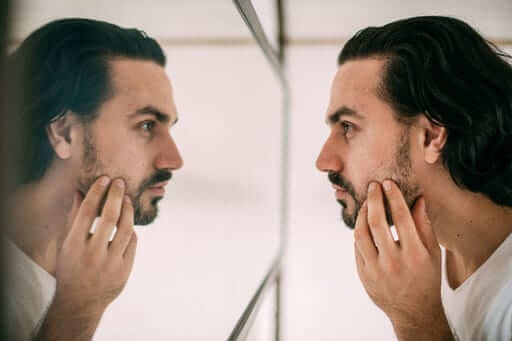
What Is Your Face Shape?
There are three basic categories of face shape that barbers generally use to recommend different looks. They are square, circle, and oval. While these may be further broken down, the basics should be a good place to start.
- Circle: Men with rounder, more circular faces should generally avoid too much bushy hair around the cheek area. Extra fading around the cheeks and jaw can help add angles and definition to this face shape.
- Square: These face shapes may be better suited towards looks that accentuate their strong jawline without overdoing the angles. If this is your face shape, consider softer edges and leaving some business around the jaw area.
- Oval: For oval shapes, it can be important not to create an overly elongated look. It is a good idea to focus the fade on the horizontal lines of the jaw and around the cheeks to create balance.
All of that being said, there is no need to take all the fun out of having a beard by overthinking the look you are going for. At the end of the day, the beard and hairstyle you choose should match your personal preference. Try any look that interests you, and if you decide you don't like it, simply let your hair grow out again.
Deciding Where To Fade
As has been mentioned, you will probably want to choose one of the faded beard styles we've discussed and alter it to fit your desired appearance. The main areas you have to work with are the sideburns, cheeks, and neck area. Cleaning up the cheeks can be extremely helpful for men who struggle from patchiness in those areas. Working with the sideburns helps your beard flow seamlessly into your hair. Even if you don't care for the more extreme fades that go far up into the hair and around the cheeks, your beard will still look cleaner with some fading around the neck and chin.
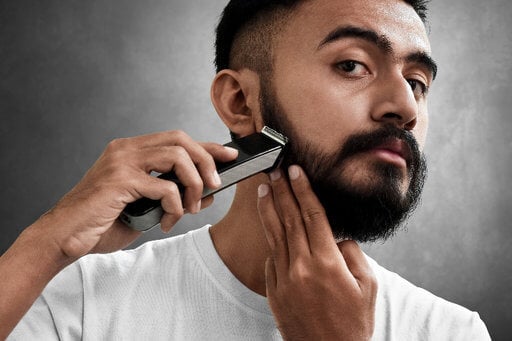
Shaving Your Fade in 4 Steps
According to a 2017 survey, 32% of men aged 30 to 59 shave or trim their beards every day, with another 43% doing so at least two or more times a week. That's a lot of upkeep, especially for faded beard styles, which look best with the proper care. Being able to create these looks at home potentially saves you a lot of time and money, as well as gives you amazing bragging rights. Follow these steps to get started creating your own faded styles at home.
Step 1:
The first step of DIYing faded beard styles is to clean up the existing beard. Trim your
entire beard and mustache to the preferred length that will make up the longest sections of the fade. Then, brush your beard in a downwards motion to ensure that the hair is flat against the face. If you have a long beard, you can also consider using a beard straightener at this point.
Step 2:
It can be easiest to start with the neck area by cleaning up the growth beneath your chin. Determine where you want the fade to start; usually, this is about half an inch to an inch above your Adam’s apple. Shave this area on both sides of your face, creating one horizontal line below your chin. It is a good idea to start with higher settings on your trimmers and move towards lower settings to ensure that you don't accidentally shave off too much.
Once you have defined the faded area, shave off any remaining hair below that point. This creates a clean, faded look.
Step 3:
Now it is time to move on to the cheek area. You can put as much or as little effort into cleaning up this part of your beard as you like, though it is generally a good idea to at least remove any scraggly hairs that may be growing too far out from the main section of your beard. You can use a beard shaping tool to help you achieve a clean edge here. If you want a fade around the cheeks, use a similar method as you did with the neck area, starting with a higher trimmer setting and working your way down.
Step 4:
Use a similar process as the above steps with your sideburns. Keep in mind that you will likely not shave as close to the skin in these areas, even at the lowest shaved point, unless you are going for a specific style, such as a skin fade. Generally, the closest shaved area will be near your ear. Take your time with this section, as any mistakes will be highly visible.
Maintaining Faded Beard Styles
Let's face it, not everyone has the patience and time to create their own faded look, but just because you go to a barber regularly doesn't mean your beard should be completely hands-off. There is a lot you can do to maintain your style so that you don't have to go in for a professional trim and shave every single week.
Keeping your beard clean with a beard wash that won't irritate your skin is a great place to start. Beard oils and other products help keep everything looking sleek and healthy even when a style starts to grow out. Don't be afraid to do some basic upkeep yourself, even if you go to the pros for the more complex parts of the fade.
Choosing Your Equipment and Care Products
Whether you're ready to take on the challenge of shaving your own fade or are getting ready to visit a professional to get one of the faded beard styles you want, one thing that's certain is that you'll need great beard care gear to keep things looking as good as possible. The beauty of beards is that they grow out fast, so trying new styles is not as much of a risk as it can be with hair. Invest in some trimmers, try out some of the fades we've discussed, and don't be afraid to experiment with different products to see how they change the look and feel of your beard.
